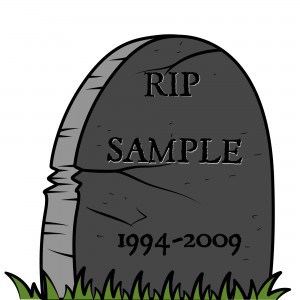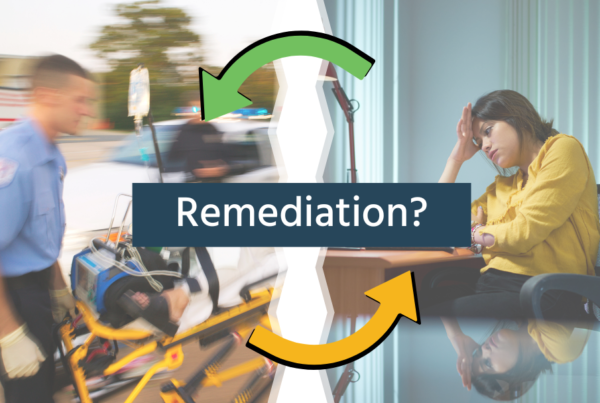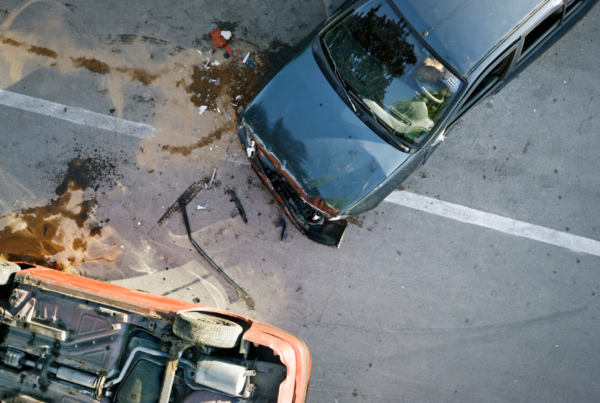By Dan Limmer
EMTs have been taught a SAMPLE history for some time. While it is an easy mnemonic, it has evolved into a rote process for conducting an assessment. It is time to shed our dependence on the SAMPLE history and use a more mature and appropriate process for history and physical examination.
Old timers will remember that the traditional medical AMPLE mnemonic was in widespread use prior to the 1994 EMT-B curriculum release. At that point the “S” was added. In combination with a  curriculum that was widely regarded as “watered down,” the entire history and physical examination for the EMT suffered a mindless deterioration.
curriculum that was widely regarded as “watered down,” the entire history and physical examination for the EMT suffered a mindless deterioration.
I’m not opposed to easy. But I don’t like EMTs getting out of class and passing the exam but not feeling secure in the back of the ambulance. Class after class would ask their instructor, “How will I know what to say or do when I get into the back of an ambulance?”
For some, the secondary assessment portion of the old NREMT medical patient assessment practical station became a simple reciting of the SAMPLE history and “a few other things to show you assessed something.” The physical exam was a one-point check box. This is so wrong.
This failure is caused by our dependence on the SAMPLE history as something more than a mnemonic. Somehow it became our assessment. While the history is of great value in the medical patient, it isn’t the only thing. And it should be a thinking process.
The National EMS Education Standards provides the mature approach we are looking for. The approach we really need. It is based on a foundation of pathophysiology and involves an assessment of body systems (much like the medical model). This is supported in the new NREMT skill sheets with a 5-point value for body system exams. If a patient has chest discomfort or respiratory distress, the EMT can assess those systems. In an altered mental status presentation, the EMT will have an educational background to assess a variety of possible systems.
Difference between the old and new assessment theories.
An EMT approaches a 72-year-old female patient with difficulty breathing. The patient is sitting on the edge of her bed in the tripod position and has 2 – 3 word dyspnea. The distress came on that afternoon and is severe. Oxygen is administered based on the level of distress and pulse oximetry readings as part of a good primary assessment.
The patient reports minimal significant medical history–just allergies—for which she was recently prescribed the medications on the dresser. The EMT finds Nasonex and Combivent.
So the EMT finds respiratory distress and a medication that is prescribed to the patient for respiratory distress. This appears to be a 1994 EMT-B “no brainer” to assist the patient with the medication.
But what if the patient’s respiratory distress isn’t caused by bronchoconstriction?
I was on this call. As a paramedic I did a respiratory and cardiac work-up and found pedal edema, orthopnea, weight gain, rales and dyspnea on exertion. It was heart failure.
The point of this is not to extoll my personal experience—or even to play up paramedics. Why? Because an EMT should now know how to perform a basic cardiac and respiratory work-up and come to the same conclusion I did. No advanced skills were necessary to determine that this wasn’t a case of allergies or reactive airways.
It turns out that the patient had been developing heart failure and went to the doctor for “wheezing.” The doc went the allergy route (rather than the wheezing of cardiac asthma) and prescribed the medications. It happens. This was an otherwise very healthy 72-year-old woman.
EMT-Bs trained under the 1994 curriculum may have looked at this as an opportunity to assist the patient with their inhaler. More and more EMTs are carrying small volume nebulizers on the rig. Some carry CPAP, intranasal medications and more. As the EMT’s toolbox gets bigger, the need for thinking (and solid assessment on which to base that thinking) increases.
This situation shows the difference between a rote SAMPLE history (really a simple matching exercise) and a true physical examination process. I’m happy to say that the EMS education standards can take us away from this rote process into the realm of thinking—if we let it.
If SAMPLE should be downplayed and we need a more thought-based method of assessment, how is that process taught?
There is no easy answer. It will take a major paradigm shift to truly make the necessary changes–and the biggest changes will rest on the shoulder of the educators. The following 5 tips span the spectrum of education from lecture to skills to testing.
5 Tips for Integrating Patient Assessment in the Classroom
- Integrate some pathophysiology into every lecture. This is the difference between students memorizing list of signs and symptoms and students understanding and predicting signs and symptoms.
- Use a complaint-based approach in your classes. Label your sessions by complaints—not conditions or “emergencies.” It is a small thing but it sets a tone. Then start each lecture broadly and work into greater detail. This is the same approach used with patients in the field.
- Teach differential diagnosis. Even though EMTs won’t diagnose in traditional terms, the process is valuable to help them consider the possibilities. This will help them determine what to examine for. Even by thinking of the possible body system involved your students will have a direction for assessment. In the case where EMTs have intervention choices (small volume nebs, CPAP, naloxone are just some of the things EMTs are doing in some areas) their decisions will be more accurate.
- Reduce your lecture time by at least 10% and integrate case-based scenarios. (I actually think 10% is low but didn’t want to scare you.) We need students out of their seats and thinking/practicing more.
- Beef up your exams (both written and practical) to include more scenario-based decision-making questions. If students know it is expected of them they will take it more seriously in class.
We’d love to hear your thoughts on this posts. Please feel free to leave a comment and share the link with your colleagues.



I think the AMLS approach is a great way of integrating scenarios in the classroom. I too, am guilty of throwing a SAMPLER together and an exam. Its hard to fight complacency but in AMLS I found the classroom so much more involved and conducive to teaching AND using what you learn that I’m now becoming an Instructor! Its one thing to regergitate information its another to be in the habit of doing it almost as muscle memory.
Robert–it is great to see people embracing a more clinically-based assessment process in certification courses (like EMT). SAMPLE was never designed as a primary assessment process, rather as a mnemonic to help remember the parts. I believe that EMS was done a disservice in using it as a process.
I was one of the original authors of the AMLS text that is now EMPACT. (So I am obviously an EMPACT fan and advocate). I’d encourage you to check out EMPACT as the book highlights a wonderful assessment process.
Thanks for commenting!
I couldn’t agree more with the use of SAMPLE needing to end — after all, how often is last oral intake really pertinent? In our program we have long used the mnemonic LQQTSAAPO (pronounced loot-sap-o). It stands for: location, quality, quantity, timing, setting, aggravation/alleviation, associated manifestations, pertinent negatives, & other (a leading question for the patient to fill in any other symptoms which go along with the current medical crisis… for instance “I saw my doctor this past week and s/he diagnosed me with allergies, but the medicine I was prescribed doesn’t seem to work”).
This pattern of questioning not only collects much more useful, in-depth information but also serves as a template for the medical provider’s entry note and the beginning of his/her narrative… “I have a 72 yoF complaining of shortness of breath. She currently has 2-3 word dyspnea, which she describes as the worst difficulty breathing she’s ever had. The Pt states the dyspnea started about a week ago and has been increasing. Initially the dyspnea was only when active, but is not occurring at rest. The Pt states sitting/sleeping upright helps ‘a little’ and that it worsens with physical activity. The Pt states that he ankles have been increasingly swollen during this time period. The Pt denies N/V/D but states intermittent chest tightness. The Pt states seeing PCP 5 days ago w/ Dx of allergies, but states the medication she was given does not help.”
We have found this line of questioning, in combination with a large dose of case study review and hands-on scenario work, to be a very effective way of training students for the field.
I wish I could give proper citation to the originator of LQQTSAAPO, but the nursing text (possibly Mosby’s?) from which it was originally taken was long before my time.
Dan-
100% agree with the post. . . . BUT (yes, there is always a BUT with me)- I don’t want readers to miss the point you are making- it’s getting the history and looking at the big picture in a critical thinking sense. I always do a “big 5” review of systems (ROS) with all my patients in whatever practice setting I happen to be working in today (respiratory, cardiac, renal, GI, endocrine) and then add the systems/history piece appropriate to their chief complaint (i.e. hx of sz, hx of CA, etc. for an AMS pt). As an educator, I think too many folks only know the SAMPLE way so they can’t teach to a higher level (another argument for why I personally think educators need the ALS or beyond level to teach effectively). Do we need a 15 point ROS on every pt in EMS (like I have to do to get paid as an NP)- no!! You’re comments that we need to look at the situation, put on the detective hat, and ask the hard questions is key. You’re also right on target with the performance imperative (give me skills and I want to use them cause I can). I think part of the reason EMS providers sometimes are frustrated when the story changes with pts is that the triage RN or doc gets a completely different story is based on how and what we ask in the field. It has often been said the history is 90% of diagnosis- your post hits that point home yet again.
Kudos on the case study comments as well. It is one of the reasons I love the EMPACT program and see others moving to it (ACLS-EP which is truly a breath of fresh air from the AHA for a change). But, providers have to have the foundation to be able to sequence their history and physical. I often tell providers when doing QA that if I can find the elements of the SAMPLE hx in their narrative or the check boxes, they covered the bare minimum bases- your post readily points out why more is needed.
As for the “EMT’s don’t diagnose” spin, I’ll argue that till the sun sets- if we don’t diagnose in EMS, I do I decided what therapies to implement as part of a treatment plan?????
See ya.
Scott
It seems to me to be a cyclical issue — whenever we come up with a “new” memory aid, it seems to get turned into a system — which never works well, because memory aids are intentionally simplistic — so we replace the memory aid and start again. I don’t think it matters which letters you use, or which mental picture (head to toe? body system? ) you use — if you substitute the memory device for the investigative process, you won’t have a good outcome. I proctor a lot of open National Registry skills tests, and have been sick for quite some time of students announcing to me “scene safety BSI” as if it were a magical code word rather than a considered action of some kind. Now I have them coming in and also announcing a new code word: “moi/noi”. Really! They just walk in and hear the scenario and say that as a statement, and seem to think that they’ve communicated something to me by doing so! What they have done is substitute a memory aid (the national registry test sheet that their instructors told them to memorize} and begin to believe that reciting it actually does something. Of course it does nothing except raise my blood pressure, so I breathe deeply and say, as kindly as possible “please explain what you mean by that”. Sometimes they have an answer, sometimes not. Now, I don’t mean to launch people into discussing my own pet peeves about NR prep and handing out scenario assessment tools as memory devices for students — but I’m saying I think the effect is similar. Students can recite — and even receive information from — a “sample history” without being able to put the pieces together to form any kind of working theory on what the patient’s health issue might be, because they are focused on the tool, not the process. I like to get my students to work on very simple scenarios and then ask them — ok, stop, what would you love to know about your patient if you had to diagnose right now? how can we get that? — rather than make them go through a preformed memory aid that tradition or textbooks prefer. But guess what — in order to pass the tests that were written on tradition and text books, they also have to memorize the currently trending mnemonics because they are written into all the standardized tests. Those become the default process…and we’re back to square one.
There have been some great comments here. It really is about thinking. Scott mentions a review of systems (ROS), a very valid clinical concept used in medicine that is inching its way into EMS. The “Body Systems Exam” in the education standards is a form of this. The 13th edition of my EMT book expands on this a lot.
Cheryl talks about the NREMT practical and how students use rote steps. It has gotten a little better with the new sheets. Our students used to have to do a hands-on exam and then remember to ask some sort of question to get the one point for assessing the complaint. Now there are multiple points (5) for body system exams. Not exactly perfect, but a lot better.
Keith–I love the LQQTSAAPO. I also love thinking about the look on my students face the first time I told them. 🙂 Last oral intake has great value in the diabetic and GI patient but not so much in the patient with musculoskeletal injury. This is a problem with the one-size-fits-all mnemonics.
Because of the limited practice in class (and sticking too close to SAMPLE) students fail to learn that 1) some questions are more important than others 2) you don’t have to go in order and 3) the best question doesn’t give you an answer, it gives you two more relevant questions.
This is describing what the EMT classes I’ve been a part of were like. I am acutely aware that most classes are not like the classes I took. I have to work with the graduates of classes that don’t teach critical thinking and good assessment skills. The results aren’t pretty.
Mackey–it sounds like you have had some great educational experiences. Using a more dynamic approach certainly benefits everyone–especially the student!
Hi Dan,
SAMPLE as you say is not a one fits all solution to patient assessment but I believe it is one aid in your arsenal to cover a comprehensive patient assessment. Following SAMPLE is beneficial in so many aspects to assist in patient assessment but it is far from the complete assessment tool.
Would I say it’s dead or time to go, no! I would encourage all practitioners to utilise it as a guide and to start of the verbal assessment using it or the LQQTSAPPO but to ask more than just the one question in each category. For example your patient case; ask what meds she is on. That is not suffice but it should lead to when did you get them, why prescribed, do they benefit you, etc.
The complications that some people suffer from poly pharmacy is on the increase and not underestimated.
I agree that there is a place for for mnemonics. They can be used for memory and direction. I think my concern is when they are the primary tool. In this regard they can be limiting. You correctly note that more than one question is necessary.
The medical patient history is a main part of the entire examination process. It is important for the EMT to ask a variety of questions based on body systems. For example, a patient with respiratory distress should be asked about dyspnea on exertion, weight gain, orthopnea, etc. I think this is where we go above and beyond.
Very well put I myself just passed my EMT basic test after 5 tries. Before that I have been around the fire and EMS for 10 years and Sample is a great start if used correctly for what your there for. As for the class room teaching I think a teacher needs to understand each student learns differently. I have dislexia and didn’t get everything in the book to sink in my head but could do all the hands on and answer questions one on one Alda long. When I found on my own there was a audio emt-b book I paid for it and passed my test the first time.
Learn the students then teach the students. The books only teach you so much.
First, congratulations on your success. I have great respect for your determination.
I think a more practical approach to education (dynamic processes like case studies and scenarios, critical thinking exercises, etc.) benefits almost every type of student. It also helps students understand and master things like a history and physical examination.
There is indeed a difference between teaching and learning.
Thank you for posting. Keep learning!